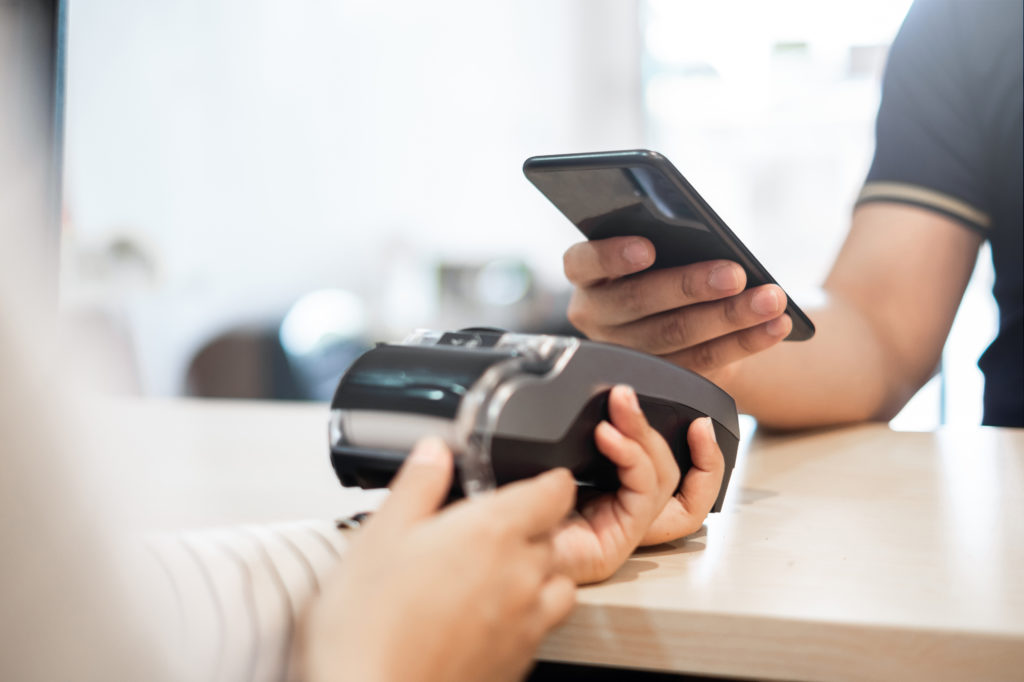One of the most beneficial changes for a customer today would be to adopt contactless payment. According to a report by Markets and Markets, the global market for contactless payment technology is set to grow at 11.7% CAGR, from $10.3 billion in 2020 to $18 billion by 2025. Advanced technologies of today play a major role in advancing and popularising contactless payments. Whether it’s NFC, mobile wallets or EMV payments, the future of payments has almost zero physical contact. Integrating contactless payment technologies within mobile devices is the key driver of this trend and will transform digital transactions forever.

Given the global Covid-19 situation, businesses around the world are investing in contactless solutions for payments. The demand for these solutions has also grown as it is instant, convenient and can be carried out remotely. As the digital transformation journey accelerates within organisations, convenience and security are the major objectives for payment technology providers.
Finance companies wanting to stay ahead in the crowded market must encourage and provide contactless payment options and technologies like tokenization, push provisioning and contactless EMV payments for their audience. Instant payment with no security issues are the expectations consumers have today.
Tokenization:
The process in which sensitive information about a user’s cards is replaced with unique symbols or tokens is known as tokenization. These tokens hold all the fundamental information about a user’s data and do not compromise on safety. The most important part of the tokenization process is to ensure that a customer’s card details cannot be traced. For this reason, it is replaced with unique tokens.
Tokens function as encrypted transaction numbers that keep precious account information a secret from the merchant as well as anyone who can steal this tokenized information. It is crucial in the handling of CNP fraud. Consumers paying monthly bills, frequently shopping online or using Apple Pay/ Android Pay understand what CNP transactions are. For these methods, EMV is not the most effective method as a physical reader is absent which is needed to validate chip credentials.
Tokenization Begins with EMV Payment:
With today’s chip-enabled cards, an EMV chip is essentially a processor chip that uses data to enable the processing of transactions using dynamic data from the card’s credentials.
However, this technology is not perfect and the user experience can be improved greatly. The dipping process is slow and depending on the sensitivity of the POS unit, the transaction takes longer than necessary. This does not mean the technology is ineffective. EMV payment transactions are a critical part of the digitisation of payments as they have brought dynamic data into the digital transaction process. This has improved the processing of payments and the security of consumer information for physical card transactions.
POS Will Lead Digital Payment Technology
Point of Sale or POS units are directly connected to customers and retailers. POS is a device that transacts payments using debit or credit cards in retail outlets. A POS unit is not 100% contactless; customers still need to use their physical card to swipe or insert followed by entering their PIN. However, there are many benefits to POS including reduced transaction time, low cost of deployment, higher revenue and better customer experience. With mPOS units entering the fray, this mode of payment is getting closer to the goal of being contactless. Customers no longer need to wait in queues at checkout counters; they can simply walk up to any employee with an mPOS machine and pay for their items.
As contactless payments are looking to gain a large customer base quickly, experts suggest that merchants and consumers should use recommended protection and privacy methods. Consumers using NFC need to protect their devices with a password. Meanwhile, merchants working with contactless card or digital payments need to deploy secure payment infrastructure that complies with PCI standards.
